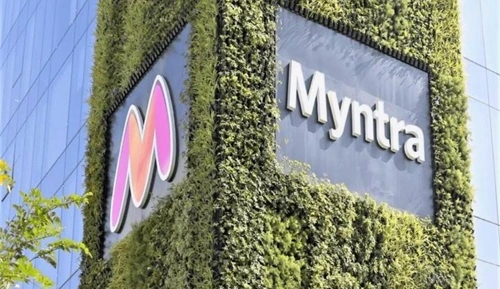Myntra, one of India’s leading fashion e-commerce platforms, has established itself as a go-to destination for online fashion shopping. Originally founded in 2007, Myntra was acquired by Flipkart in 2014 and has since grown under the umbrella of Walmart, which acquired Flipkart in 2018. As of 2024, Myntra continues to dominate the online fashion space in India, leveraging its vast product portfolio, strategic marketing campaigns, and strong parent company backing. This SWOT analysis explores Myntra’s strengths, weaknesses, opportunities, and threats, along with an overview of its current standing and future plans.
Current Overview of Myntra

Myntra boasts a diverse range of products, including clothing, footwear, accessories, beauty products, and personal care items. The platform features over 1,500 brands and has a strong presence in more than 90,000 locations across India. With annual revenue surpassing ₹35 billion in 2022, Myntra remains a key player in India’s fashion e-commerce industry. The platform has successfully integrated local and international brands, offering customers a wide array of choices at competitive prices. Myntra’s ability to adapt to changing market conditions and consumer preferences has been a significant factor in its sustained success.
Strengths
1. Diverse Product Portfolio: Myntra offers an extensive range of products, including fashion accessories, clothing for men, women, and children, footwear, and beauty products. This wide variety allows the platform to cater to a broad customer base across different demographics.
2. Strong Parent Company: As a subsidiary of Flipkart and ultimately Walmart, Myntra benefits from strong financial backing and resources. This relationship enhances Myntra’s operational capabilities, ensuring stability and the ability to scale efficiently.
3. Efficient Supply Chain: Myntra’s well-established supply chain ensures that it can deliver products to over 90,000 locations across India. This extensive distribution network allows the company to meet the demands of a diverse and geographically dispersed customer base.
4. Innovative Marketing Strategies: Myntra’s marketing campaigns, including celebrity endorsements and large-scale sales events like the “End of Reason Sale,” have been highly successful in driving customer engagement and sales. The company has effectively used social media and digital marketing to reach its target audience.
Weaknesses
1. Intense Competition: The Indian e-commerce market is highly competitive, with players like Amazon Fashion, Ajio, and Nykaa Fashion posing significant challenges. This intense competition limits Myntra’s market share growth and puts pressure on maintaining its leading position.
2. Dependence on India: While Myntra is a major player in India, its operations are largely confined to the Indian market. This dependence makes it vulnerable to economic fluctuations and regulatory changes within the country.
3. High Operating Costs: Managing a vast product portfolio and maintaining an extensive supply chain network come with high operational costs. These costs can strain profitability, especially in a highly competitive environment where price sensitivity is high.
Opportunities
1. Global Expansion: Myntra has the potential to expand its operations beyond India into neighboring countries like Bangladesh, Sri Lanka, and the Middle East. This expansion could open new revenue streams and reduce the company’s dependence on the Indian market.
2. Private Label Growth: Increasing the number of private label offerings could boost Myntra’s profit margins. These exclusive brands can differentiate Myntra from competitors and cater to niche markets with higher profitability.
3. Leveraging Influencer Marketing: Partnering with influencers and celebrities can enhance Myntra’s brand visibility and appeal, particularly among younger consumers. This strategy can also help the platform tap into new customer segments.
4. Bridal Collection Expansion: The bridal wear market in India is substantial, and Myntra could capitalize on this by launching a dedicated bridal collection. Offering customizable options could further enhance its appeal in this lucrative segment.
Threats
1. Economic Instability: Economic downturns, inflation, and unfavorable government policies can adversely affect consumer spending power, directly impacting Myntra’s sales and profitability.
2. Fast-Changing Fashion Trends: The fashion industry is known for its rapidly changing trends. Failure to predict and respond to these changes can result in unsold inventory and lost revenue.
3. Reputation Risks: As seen with past controversies, such as backlash over its logo, Myntra is vulnerable to reputational damage from public relations missteps. Such incidents can negatively affect brand perception and customer loyalty.
Future Plans of Myntra
Myntra is poised to continue its focus on innovation and expansion. The company plans to enhance its private label offerings and increase the number of exclusive brands available on the platform. Additionally, Myntra is exploring opportunities to expand into international markets, which could diversify its revenue streams and reduce dependence on the Indian market. The company also aims to strengthen its presence in the bridal wear segment, capitalizing on the growing demand for Indian bridal fashion both domestically and internationally.
Conclusion
Myntra’s position as a leading fashion e-commerce platform in India is supported by its diverse product portfolio, strong parent company, and innovative marketing strategies. However, the company faces significant challenges, including intense competition and economic fluctuations. To sustain its growth, Myntra must capitalize on opportunities for global expansion, private label growth, and influencer marketing. By addressing its weaknesses and mitigating potential threats, Myntra can continue to thrive in the dynamic and competitive e-commerce landscape of 2024.